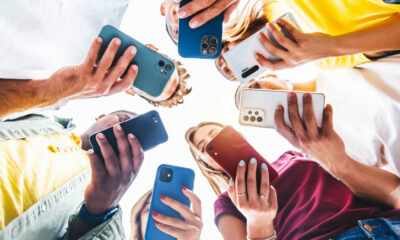MARKETING
What Social Media Trends are Expected to Emerge in 2022?

“Today walking with the latest trend is not enough! World activities are changing in a flash; you need to run to match the upcoming change in the market”.
Social media has opened doors of opportunities for ecommerce businesses to sow the seeds of ideas and nurture them. Once these ideas start flourishing with time, you will observe many branches of success grown out of the tree of the online business marketplace.
In this article, we are going to discuss what surprises social media marketing agencies can expect to flourish in 2022. Let’s dig in!
Surprises online marketplace can expect from social media trends in 2022
1. TikTok! Why am I not surprised?
While the whole world was fighting the pandemic, TikTok helped many people pay their bills and also became one of the best entertainment sources for millions of users in the world. You might have heard many acquaintances joining TikTok for pass time, or even earning a few extra bucks out of it.
TikTok has undoubtedly seen rapid growth in social media conduct during 2021. The reason TikTok can be a guardian angel for your business is that it offers a platform where you can easily connect with the consumers, and explain your services to them in one of the best ways. TikTok caused other social media platforms to create its replica. For instance, Instagram and YouTube introduced their version of TikTok called Reels.
2. Capturing attention from new audiences
Social media has promoted online presence to the ecommerce business on a global level. Now online brands can advertise products and services spreading their brand awareness by reaching new audiences. Social media presence helped these companies to boost sales and revenue effectively.
Most marketers claimed that their primary goals for 2022 include fostering relationships with customers and increasing brand loyalty through new schemes on social media.
Also, they promise to come up with such marketing tools on social media that will improve their customer service targeting maximum customer retention.
During the pandemic, most consumers were required to experience their first online purchase. Companies are reaching out to such freshers as they have higher chances to stay with the brand for a longer period compared to the expert online shoppers.
3. Social media hiring will be on a hike in 2022!
Social media has become one of the most powerful weapons against competitors. It depends on your awareness of how you can make use of social media opportunities to generate revenue. In a survey, 79% of users admitted that they were impressed with the user-generated content on social media that impacted their purchasing decisions.
This means companies will make a serious social media department, hiring active social media experts rather than throwing it on the side for the marketing team to do it as a side job.
Social media acts as the mouth, eyes, and ears for your brand. It sees and listens to users’ queries and demands, and then answers the users on your behalf. This realization has convinced ecommerce businesses to build a strong foundation on social media with the help of their social media marketing agency.
4. Transparency through Augmented Reality
One of the reasons people hesitate to try online shopping is that they have a hard time trusting the genuine nature of the brand. However, online business has rooted out this fear by introducing a practice of Augmented Reality where the people have an option to try out the product sample for free before buying the product. This helped companies to build trust among the audience and gain more users through Augmented Reality.
It is believed that Augmented Reality will gain prominence with time in 2022. Many companies will give away free samples to make users believe in their product quality.
5. 2022 is the year of Influencer marketing!
Another social media trend that pandemic has given rise to the everyday influencers including micro-influencers and nano-influencers.
These influencers have persuaded users to try out new things compared to the famous brands, making influencer marketing a strong revenue generator opportunity in 2022.
6. Instagram and Twitter can never lose their touch!
Twitter and Instagram are becoming crucial platforms for B2B businesses. According to a survey, 70% of businesses claimed that they are planning to increase their investment on Twitter, while 63% of B2B businesses have decided to invest presence on Instagram.
7. Playing the CSR trump card!
In the last two years, corporate social responsibility (CSR) has proven its significance as it targets emotions and responsibility towards society’s welfare.
People do not think twice before going for such products that will benefit society in general. CSR will gain a much better response from the audience with time. In 2022, companies will be using the CSR strategy to influence users to buy their products, contributing to society.
The bottom line is…
The social media marketing agency has a lot of experiments to try in 2022 to attract an audience towards the brand. Companies are realizing the significance of social media platforms and are willing to invest in the upcoming opportunities that will be offered in the near future.
Source link













You must be logged in to post a comment Login